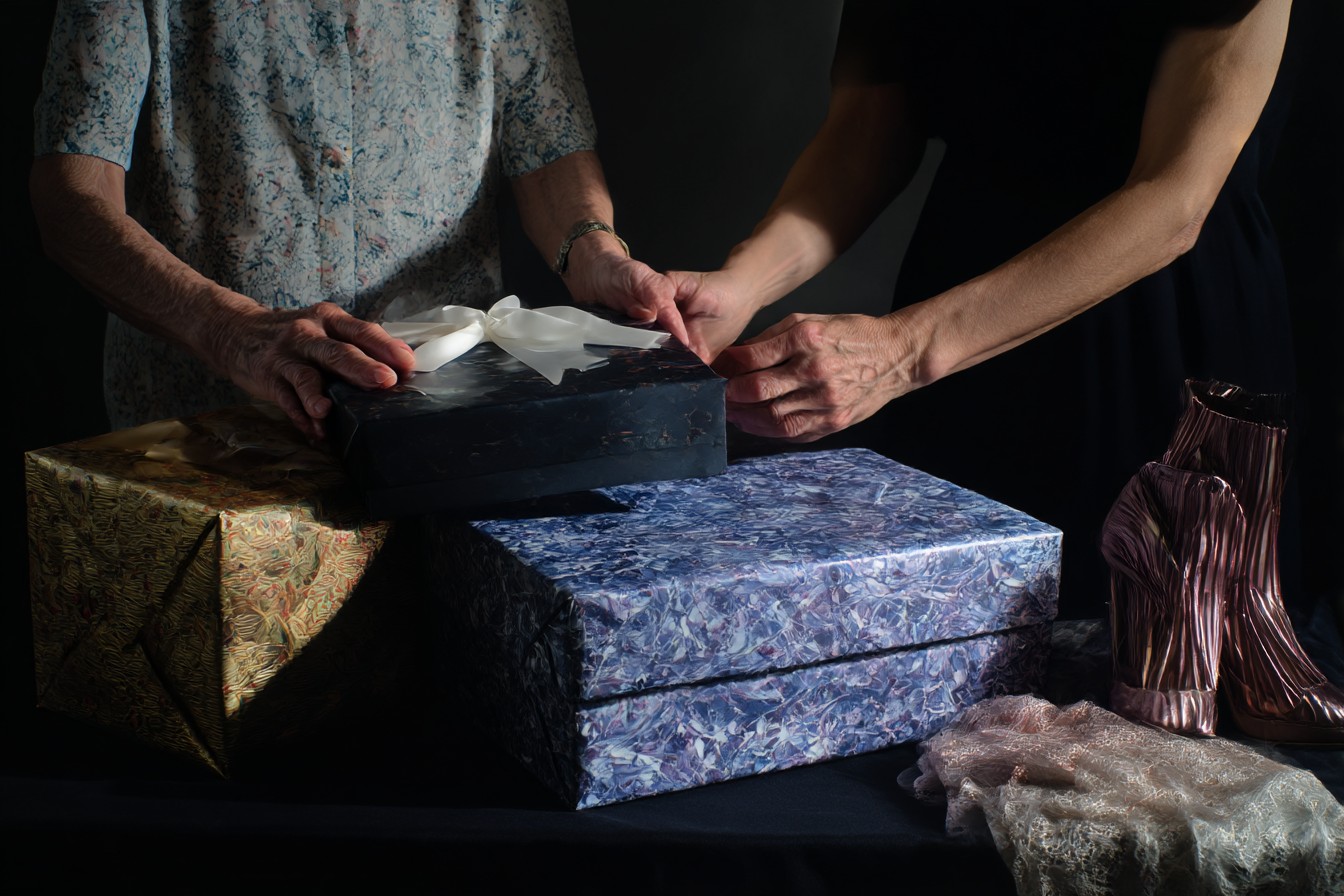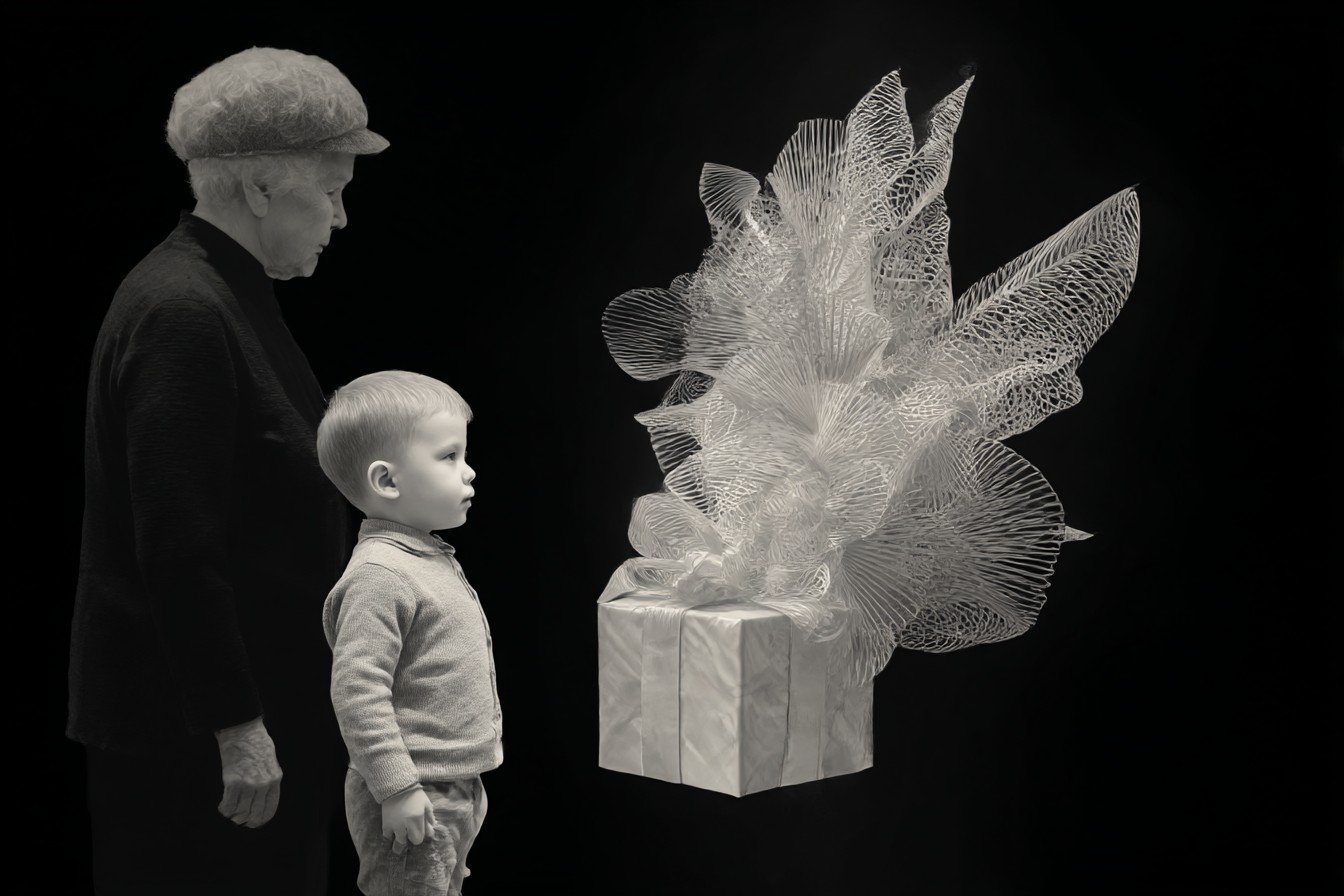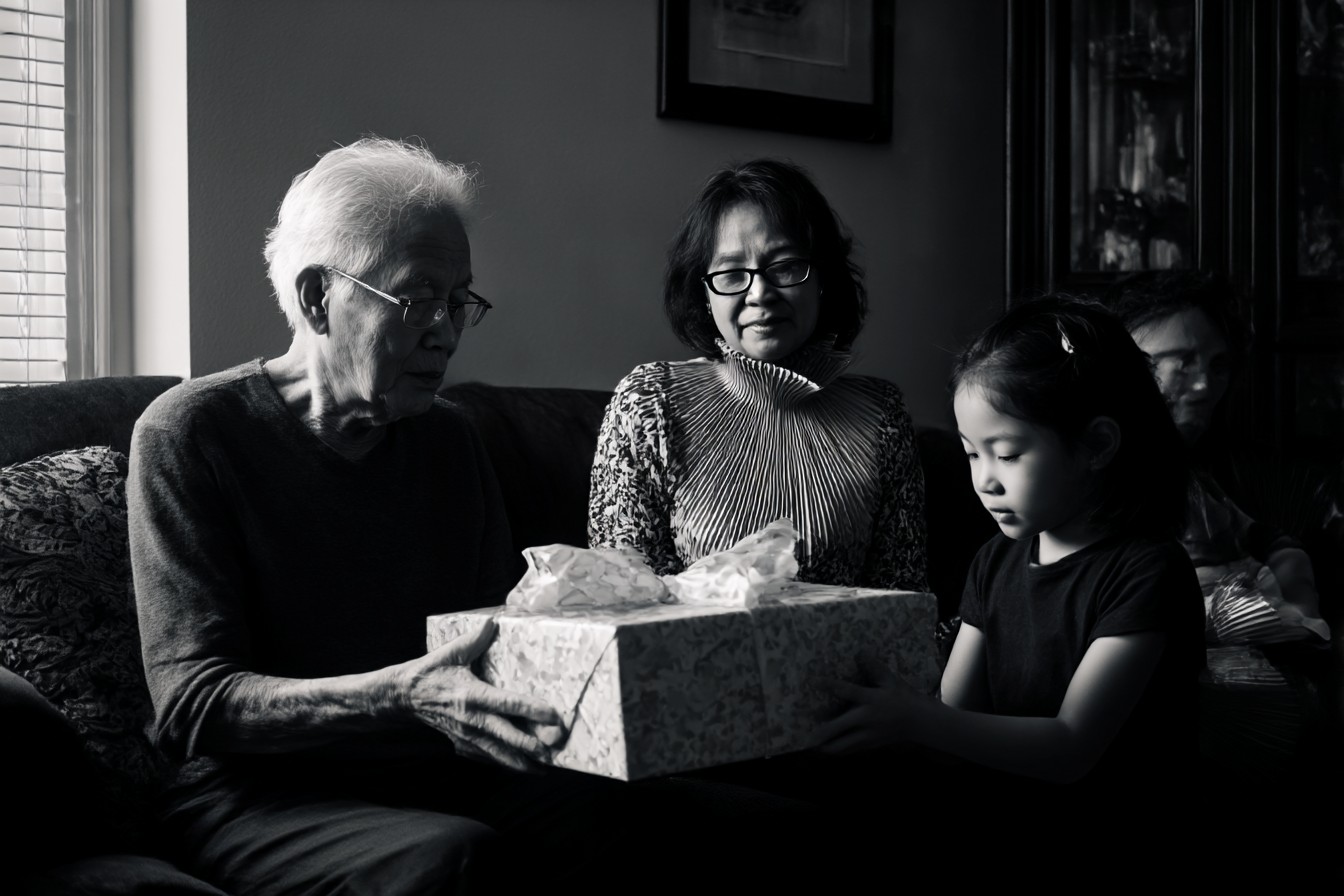I’ll never forget the time my cousin Maria brought a hand-knitted scarf to our family’s Christmas gift exchange. The room went awkwardly quiet. My uncle Bob—never one for tact—asked loudly, “That’s it? Just a scarf?” I watched Maria’s face fall as she mumbled something about being between jobs. Meanwhile, my other cousin Jennifer’s gift of the latest iPhone accessories got all the oohs and aahs.
That moment has stayed with me for years. It was one of those uncomfortable but enlightening experiences that made me rethink everything I thought I knew about gift-giving.
I grew up solidly middle-class in a Boston suburb where my gift anxiety typically revolved around whether I’d picked something “thoughtful enough” rather than worrying about affording a gift at all. My parents could usually buy whatever practical items they needed, which meant gifts were expected to be something extra—something surprising or indulgent that the recipient wouldn’t purchase for themselves.
God, I was clueless.
It wasn’t until college when I started interacting with a more economically diverse group of friends that I began noticing how differently people approached gift-giving. My roommate Kelsey would spend weeks hunting down limited-edition sneakers for her brother, while my study partner Amal carefully selected practical items her parents actually needed but wouldn’t spend money on for themselves.
I remember being genuinely confused the first time a friend seemed thrilled—not disappointed—to receive a pack of nice socks for their birthday. “These are perfect!” he’d exclaimed. “I’ve been needing new ones forever but kept putting it off.” Meanwhile, I’d been stressing about whether the “experience gift” I’d gotten another friend was memorable enough. Talk about different planets.
My first proper eye-opener came during my post-college years when I started dating Jake (now my husband). Jake grew up in a household where money was always tight. The first time I took him home for Christmas, he seemed overwhelmed by the sheer volume of gifts under my family’s tree. When he handed my mom a single, beautifully wrapped package containing a hand-carved wooden spoon, I worried it would seem insufficient compared to the mountain of presents we typically exchanged.
I needn’t have worried. My mom actually cried when she opened it. “This is gorgeous,” she said, running her fingers over the smooth wood. “Did you make this?” Jake nodded, explaining how he’d learned woodworking from his grandfather. That handmade spoon has outlasted virtually every other gift she received that year—she still uses it and mentions Jake whenever she does.
What struck me was how Jake approached gift-giving with a completely different set of values. In his family, gifts were rarely store-bought. They made things, offered services, or gave items that served a specific need. The thoughtfulness wasn’t in the surprise factor or novelty—it was in the utility and personal connection to the gift.
I’ve been collecting these observations for years now (yes, in one of my ridiculous gift notebooks—Jake finds this simultaneously endearing and slightly concerning). What I’ve noticed is that our socioeconomic backgrounds create these invisible frameworks for how we think about gifts—what counts as “generous” or “thoughtful” or “appropriate.” And when those frameworks clash, things get weird and feelings get hurt.
Take my friend Dani, who grew up in serious poverty. She once told me that receiving expensive gifts makes her incredibly uncomfortable. “It feels like a power move,” she explained. “Like they’re showing off how much they can spend on me, and I know I can’t reciprocate at the same level.” Meanwhile, my college friend Wesley, who comes from significant wealth, tends to give lavish gifts without thinking twice and feels genuinely hurt if his generosity isn’t met with appropriate enthusiasm.
Neither approach is wrong, obviously. They’re just coming from completely different worlds.
One Christmas, I watched Wesley give Dani a pair of designer sunglasses that probably cost about $300. Dani smiled politely but later confided that she was stressed about how to respond. “Does this mean I’m expected to spend that much on him now? Because I can’t. And what if I lose them or break them? They cost more than my monthly grocery budget.” Meanwhile, Wesley was disappointed by her lukewarm reaction, telling me later, “I thought she’d be excited. Who doesn’t love Ray-Bans?”
Um, people who get anxiety thinking about carrying around something that expensive on their face? Just a thought.
I’ve made my own mortifying mistakes in this department. When Jake and I first started dating, I bought him an expensive watch for his birthday. I thought I was being generous—showing him how much I valued him. Instead, he seemed almost embarrassed. Later, he gently explained that the watch made him uncomfortable not just because it was pricey, but because it wasn’t practical for his job in construction. He would never wear something that fancy to work, which meant it would sit in a drawer most days.
“I’d much rather have a few new t-shirts for work,” he admitted. “Mine are all getting pretty threadbare.”
I felt like such an idiot. I’d been so caught up in making a statement with the gift that I hadn’t actually considered what would improve his daily life. The watch was more about how I wanted to be perceived as a girlfriend than what he actually needed or wanted.
That conversation changed my entire approach to gift-giving. I started asking different questions: What would actually make this person’s life better? What resources do they have or lack? What do they value most—time, convenience, comfort, status, experiences, security?
Here’s what I’ve learned from navigating gift exchanges across different economic realities:
For people who’ve experienced financial insecurity, practical gifts often hold more meaning than luxury items. A high-quality version of something they use daily—like good kitchen tools, durable clothing, or premium consumables they wouldn’t splurge on themselves—can be deeply appreciated. These gifts say, “I want to make your everyday life a bit better” rather than “Look what I can afford to give you.”
For folks who’ve never worried about meeting basic needs, experiential gifts or items that create opportunities for connection often resonate more. Concert tickets, cooking classes, unique experiences—these gifts create memories rather than just adding more stuff to an already well-stocked life.
I’ve also noticed that reciprocity expectations vary wildly. In some circles, there’s an unspoken expectation that gifts should be roughly equal in monetary value. In others, the emphasis is on the thought and personal connection, regardless of price tag. Misalignment here is a recipe for discomfort.
My mother-in-law taught me an important lesson about this. She’s never had much money, but she’s an incredible baker. Every Christmas, she gives everyone elaborately decorated cookie boxes. She spends days making them perfect. When we first got together, I made the mistake of thinking I needed to “elevate” my gifts to her beyond what she could afford to give me. What I didn’t understand was that her cookies represented dozens of hours of skilled labor and deep love—far more valuable than whatever store-bought item I could wrap up.
This realization changed how I approach reciprocity. Now I think about balancing effort, meaning, and appropriateness rather than just monetary value.
One of the trickiest situations I’ve navigated was planning a baby shower for my friend Tara. The guest list included both her childhood friends from her working-class hometown and her new colleagues from the tech company where she’d recently landed a management position. The income gap between these groups was substantial.
I worried that a traditional registry would create pressure on some guests while seeming too limited to others. So instead, we created different gift categories: handmade items, secondhand treasures, new essentials, group gifts, and experience offers. This allowed everyone to participate meaningfully according to their means and skills.
One of Tara’s hometown friends refinished and painted a secondhand rocking chair that became the nursery centerpiece. Her work colleagues went in together on a high-end stroller. Her aunt made a beautiful baby quilt from family fabrics. Every gift was valued for what it represented—not its price tag.
The shower was a turning point in my understanding of inclusive gift-giving. I realized that creating space for different types of contributions wasn’t just about avoiding awkwardness—it was about honoring the diverse ways people express care.
I’ve been thinking about all this again recently because Jake and I are expecting our first child in a few months. As I set up our registry, I’m trying to be mindful of how it might be perceived by different people in our lives. We’ve included items at various price points, emphasized secondhand options, and suggested group gifts for bigger items. I’ve also made it clear that handmade gifts are deeply valued.
This might sound like overthinking—and honestly, it probably is. But I’ve seen how gift exchanges can either strengthen connections or create distance between people who care about each other but come from different economic realities. I’d rather put in the extra thought upfront than risk making anyone feel inadequate or uncomfortable.
I guess what I’m trying to say is that gift-giving isn’t just about the objects exchanged. It’s a complex social language, and we’re not all speaking the same dialect. The measures of generosity, appropriateness, and thoughtfulness vary widely depending on our backgrounds, resources, and values.
The most meaningful shift in my approach has been moving from “What would impress this person?” to “What would truly serve them?” Sometimes the answer is something practical that makes daily life easier. Sometimes it’s something indulgent they wouldn’t buy themselves. Sometimes it’s simply the gift of attention—noticing what matters to them and responding accordingly.
That Christmas with Maria and her hand-knitted scarf has stayed with me all these years because it perfectly captured the painful disconnect that can happen when we judge gifts through our own socioeconomic lens rather than considering the giver’s context and intentions. Her scarf represented hours of work and creativity on a limited budget. My uncle’s dismissive comment revealed more about his values than the worth of her gift.
I still catch myself getting it wrong sometimes. Old habits die hard, and I occasionally find myself slipping back into equating price with value or overthinking gifts to the point of missing what would be truly appreciated.
But I’m learning. And honestly? Understanding how different economic realities shape our approach to giving has made me a better gift-giver and, I hope, a more empathetic person overall.
Now if you’ll excuse me, I need to go work on a baby registry that somehow bridges the gap between my cousin who thinks anything under $100 isn’t a real gift and my childhood friend who knits the most beautiful baby blankets but can barely afford the yarn. Wish me luck!





